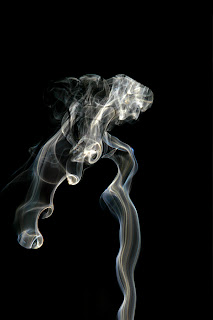
The Racetrack in Death Valley National Park is an amazing place. In seasons of high rainfall, the lake bed at The Racetrack becomes covered by a shallow depth of water, and a layer of slippery clay fills the cracks in the surface. Scientists speculate that if the surface of the water freezes and the wind blows hard enough, large sheets of ice with rocks stuck down through them can "sail" across the flat surface, moving the rocks and making trails in the mud as they pass.

One example that scientists' theories regarding rock movement at The Racetrack in Death Valley don't seem to explain is when rocks seem to take equal but opposite paths, such as these two paths here.

One of the first intersting shot opportunities is to catch the sunlight as it first reaches the mountains to the West.

The shadows move quickly across the surface of the playa at The Racetrack in Death Valley, but if you get just ahead of them you have a few seconds to set up your shot before the next rock and its track straddle the boundary between darkness and light. As the sun rose and the shadows retreated, I jogged from rock to rock and from shot to shot along the shadow boundary and ended up about a mile away from where I started!

To capture the detail and texture of the cracked mud surface of the playa, this shot was taken with a 10mm wide angle lens (16mm equivalent) about 16" off the ground, capturing the ground below out to the horizon (at the lens' smallest aperture of f/22 for depth of field of course).

As I chased mountain shadows into the middle of the Racetrack playa I encountered a very large rock, probably weighing 300-400 pounds, which had made its way via wind, mud and ice over the past 3000 years out to the middle of the dry lake bed. It was large enough to make a good subject in a wide angle shot that embraced the clouds forming overhead around the moon.

Next I headed further northward to Eureka Dunes... note the size of the hikers on the mound towards the upper right! Upon reaching the town of Big Pine a couple of hours later, I intended to buy gas then head up to the Ancient Bristlecone Pine Forest for sunset light. Unfortunately I had a flat tire, my second failure of a Goodyear tire in three weeks due to driving on washboard dirt roads.
 My first attempt at editing a couple of smoke shots together, using layers and basic Photoshop Elements tools like dodge, burn, eraser.
My first attempt at editing a couple of smoke shots together, using layers and basic Photoshop Elements tools like dodge, burn, eraser.































